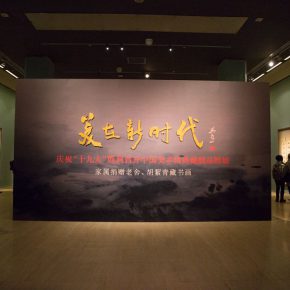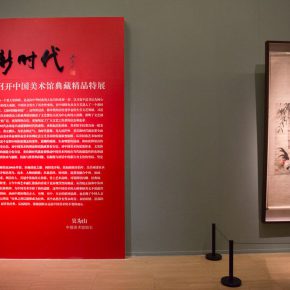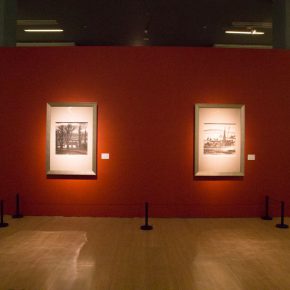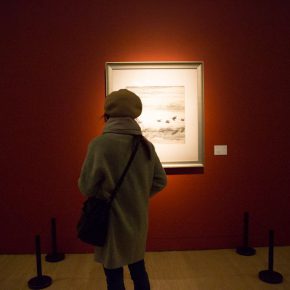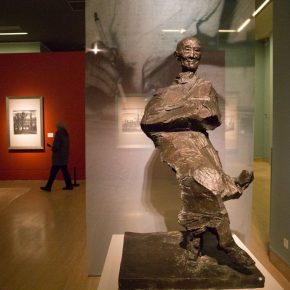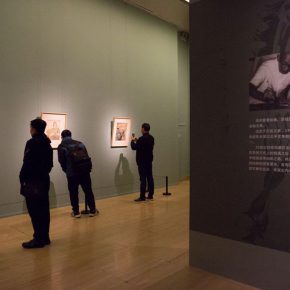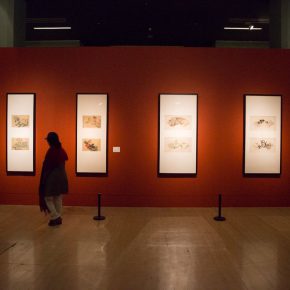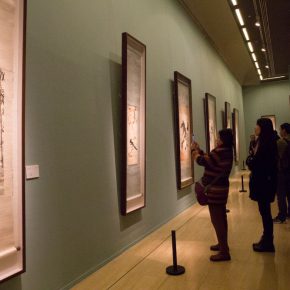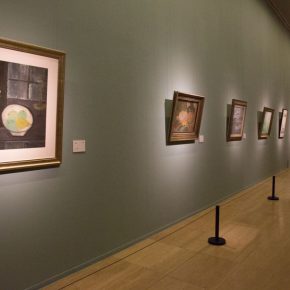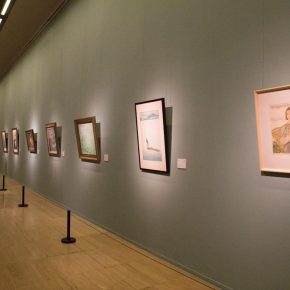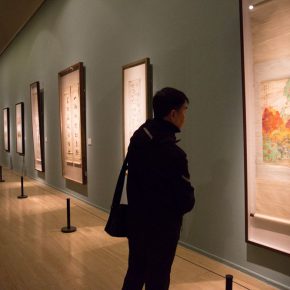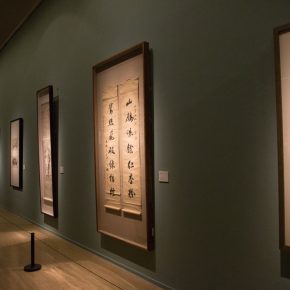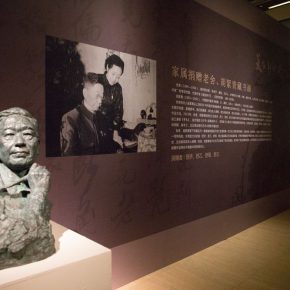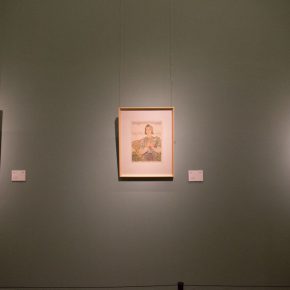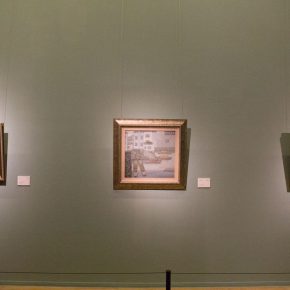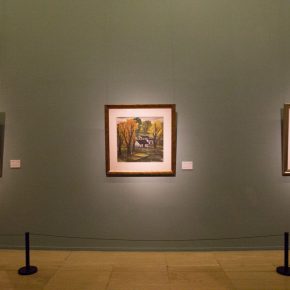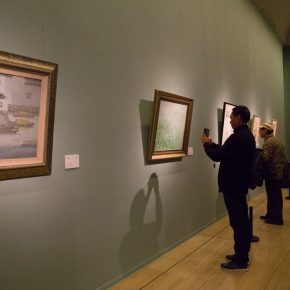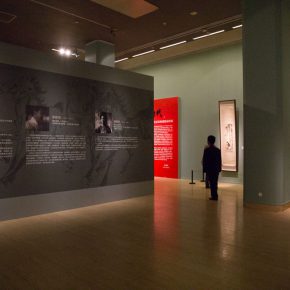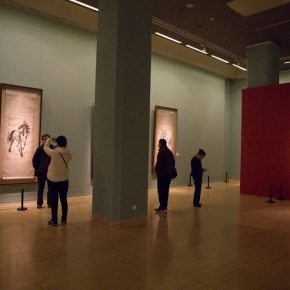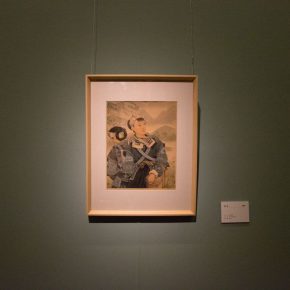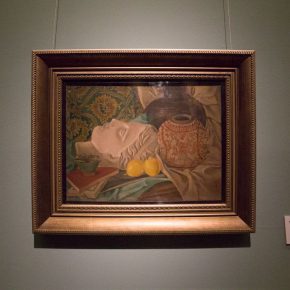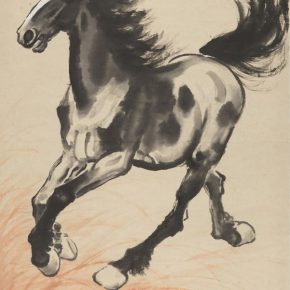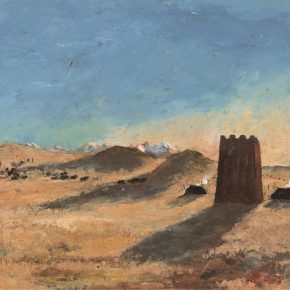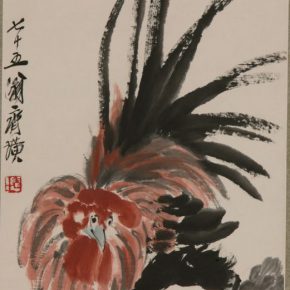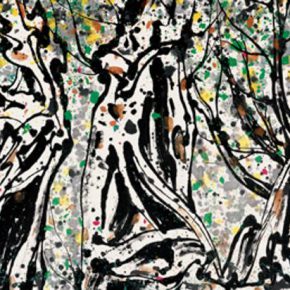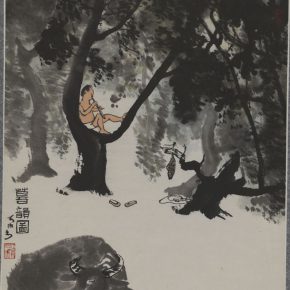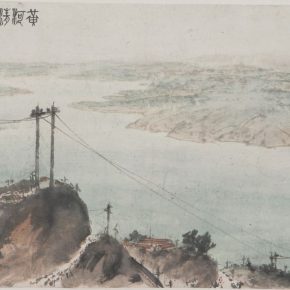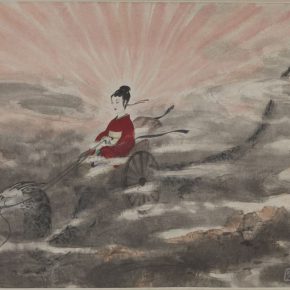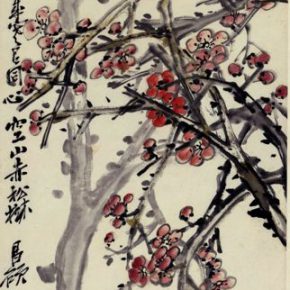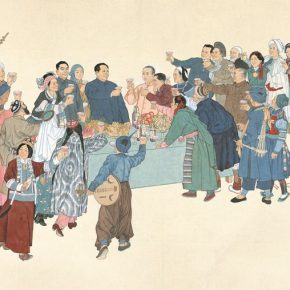
On November 17, 2017, “Beauty in the New Era – Special Exhibition of the Collection of NAMOC Celebrating the Convening of the 19th National Congress of the Communist Party of China” kicked off at the National Art Museum of China. 207 artworks by modern masters were selected from the collections of the National Art Museum of China, among them, 32 pieces by Qi Baishi, 19 pieces by Fu Baoshi, 23 pieces by Ye Qianyu, 12 pieces by Li Keran, 7 pieces by Xu Beihong, 8 pieces by Lin Fengmian, 7 pieces by Pang Xunqin, 42 pieces by Wu Zuoren, 38 pieces by Wu Guanzhong, together with 19 pieces by Zhao Zhiqian and He Shaoji of the late Qing Dynasty, and the masters of the Shanghai Style in the early Republic of China, such as Ren Bonian and Wu Changshuo. Many pieces are on display for the first time in the exhibition that is open to the general public.
Throughout the ages, people have always asked what “beauty” is, and people’s definitions of beauty are different. However, the exhibition of the “Beauty in the New Era” does not discuss the definition of beauty, but it presents a series of works that reflect the beauty of various eras in the form of an exhibition, and a set of works with its own historical developmental context which are on show in the new era, combing through the evolution context that started from the revolution of art to the revolutionary art and the socialist art, in the past century.
At the end of the Qing Dynasty and the beginning of the Republic of China, the Shanghai-style of painters, represented by Zhao Zhiqian, Ren Bonian and Wu Changshuo, gathered in Shanghai, sweeping away the tradition of copying ancient patterns in the painting circle since the Ming and Qing Dynasties, offering a new aesthetic conception & creative method to the Chinese painting circle at that time, they laid a foundation for the development of modern painting. And then there was a more profound change in the art field. Lv Cheng, who studied in Japan, sent Chen Duxiu a letter which was published in the “New Youth” magazine with the title of the “Revolution of Art”. While Chen Duxiu also published a letter entitled “Revolution of Art” in the “New Youth” magazine in the same issue, replying to Lv Cheng. Chen Duxiu focused on the Chinese painting and directed by the “Four Masters Wang”, and Kang Youwei also shouted: “The modern Chinese painting is on an extreme decline” at the same time. Since then, the topic of “the decline of Chinese painting” and the “change of Chinese painting” has been debated for a long time. Around this issue, a group of masters used their painting practices to answer the problem of the development of Chinese painting. Starting with the works of the Shanghai Style, it presents the development of Chinese paintings since the Shanghai Style in the 6 exhibition halls.
Before and after the May Fourth Movement in 1919, a group of painters represented by Xu Beihong and Lin Fengmian went to Europe and the United States to study art, they opened a door for Chinese painting to learn from & absorb Western art, advocated combining the realism of Western art & the creative concept of modern Western art with the traditional Chinese painting, to find a new path of reform & innovation in Chinese painting, giving traditional Chinese painting a new vitality. Xu Beihong incorporated the realistic techniques of Western painting into the traditional brushwork, enriching the expressiveness of Chinese painting. It presents Xu Beihong’s work of “A Fleeing Horse in Stampede” (1944), applying the untrammelled ink to draw the outline of the turning parts including head, neck, chest, and legs, so that a vivid fleeing horse is presented in front of spectators. In addition, a group of painters represented by Qi Baishi, Huang Binhong and Pan Tianshou inherited and adhered to the basic pattern of traditional painting, inheriting the tradition, while trying their best to reform and form their own styles. Although using traditional Chinese painting techniques to draw the poultry, Qi Baishi’s work of “Rooster” (1935), differs from Xu Beihong’s realistic techniques, with a weakened body structure, and uses the ink shades to show a scene where two young chickens stay between the rooster’s claws.
Seen from the perspective of time clues, these paintings spanned more than one century, the themes of traditional landscape and flowers & birds were gradually replaced by the characters of national characteristics, the fruits & vegetables of a flat-painted style, and the landscape paintings of sketching, especially a group of painters, who went through the founding of new China, started to paint the fiery lives with their own brushes. All painters consciously or unconsciously presented the peasants and the new rivers & mountains of the motherland. Such as Ye Qianyu’s “National Unity” (1953) and Fu Baoshi’s “Yellow River is Clear” (1960), etc., and the high-voltage wire rack, national unity, the motherland’s magnificent rivers and mountains, appearing in their paintings, are the performance of the style of the new era. Wu Weishan, Director of the National Art Museum of China, believed that these works of masters were created both for the time in which they were located and the future. The image paradigms they provided and the efforts they have made in the development of Chinese art were what contemporary artists should learn and develop. These profound traditional Chinese paintings and oil paintings, inspired by deep cultural consciousness and self-confidence, have embodied the greatest, strongest, fairest spiritual quality, and showed the spirit of Chinese people pressing close to nature, eulogizing nature, discovering beauty and creating beauty.
Depending on the introduction of An Yuanyuan, Deputy Director of the National Art Museum of China, the majority of these works were donated by artists and the relatives of artists. In the 2nd exhibition hall, it presents 19 works by Zhao Zhiqian, Wu Changshuo, Huang Binhong and Chen Shizeng, among them are the works donated by the families of Lao She & Hu Jieqing, and people could find the characteristics of the times and the excellent artistic level highlighted by these donations, showcasing the diverse art features in China since the 20th century and the evolution & evolvement of Chinese art in the 20th century. Wu Weishan, Director of the National Art Museum of China, believes that it was in return for the artists, people and the Party to showcase the donated works & collected works.
General Secretary Xi Jinping said that the classic pieces were regarded as the classic ones because they inevitably contain a meaningful beauty, eternal love, and mighty manner. These classic ones have casted the glory of history, with the shining of the light of the times, enlightening us in the art creation in the new era. It remains on view till November 26.
Text and photo by Yang Zhonghui, translated by Chen Peihua and edited by Sue/CAFA ART INFO


